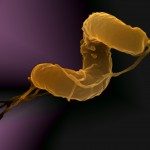Link to Pubmed [PMID] – 25670733
Link to HAL – pasteur-01407690
Link to DOI – 10.1093/femsre/fuu006
FEMS Microbiology Reviews, 2015, 39 (2), pp.246-61. ⟨10.1093/femsre/fuu006⟩
Posttranslational modification of proteins by lipidation is a common process in biological systems. Lipids provide protein stability, interaction with other membrane components, and in some cases, due to reversibility of the process, a mechanism for regulating protein localization and function. Bacterial lipoproteins possess fatty acids at their amino-termini that are derived from phospholipids, and this lipid moiety anchors the proteins into the membrane. These lipids, as is the case for lipopolysaccharides and lipoteichoic acids, play an important role in signaling of the innate immune system through the interaction with Toll-like receptors. Over the past three years, tremendous progress has been made in understanding the mechanism by which lipoproteins become lipidated. Advanced methodology in mass spectrometry, proteomics and genome-wide analyses allowed precise characterization of lipoprotein modifications and the identification of the enzymes catalyzing the reactions in diverse bacterial species. This review will highlight new findings on bacterial lipoprotein modification with focus on the reaction mechanisms and the role of lipoproteins in cell envelope homeostasis.


